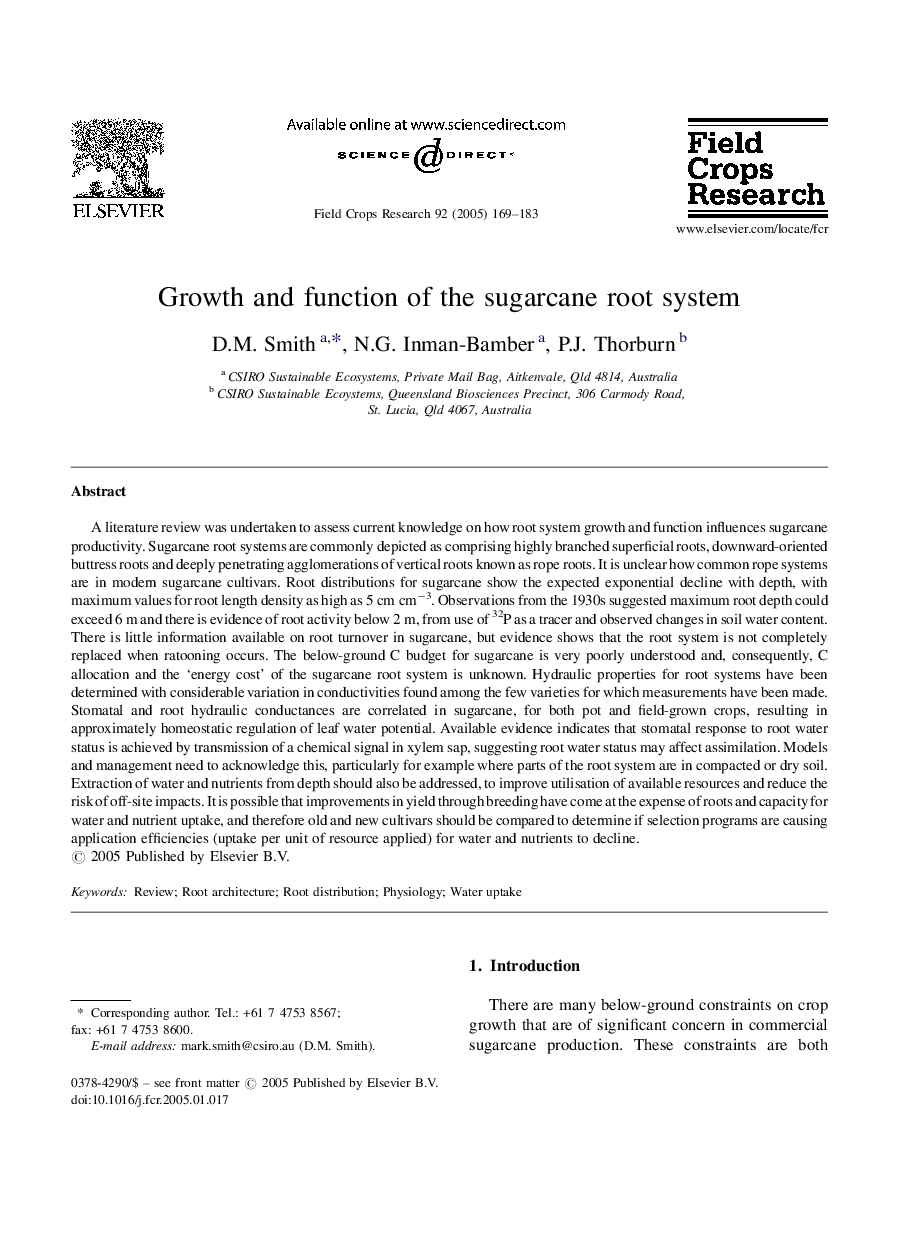| کد مقاله | کد نشریه | سال انتشار | مقاله انگلیسی | نسخه تمام متن |
|---|---|---|---|---|
| 9473550 | 1624757 | 2005 | 15 صفحه PDF | دانلود رایگان |
عنوان انگلیسی مقاله ISI
Growth and function of the sugarcane root system
دانلود مقاله + سفارش ترجمه
دانلود مقاله ISI انگلیسی
رایگان برای ایرانیان
کلمات کلیدی
موضوعات مرتبط
علوم زیستی و بیوفناوری
علوم کشاورزی و بیولوژیک
علوم زراعت و اصلاح نباتات
پیش نمایش صفحه اول مقاله

چکیده انگلیسی
A literature review was undertaken to assess current knowledge on how root system growth and function influences sugarcane productivity. Sugarcane root systems are commonly depicted as comprising highly branched superficial roots, downward-oriented buttress roots and deeply penetrating agglomerations of vertical roots known as rope roots. It is unclear how common rope systems are in modern sugarcane cultivars. Root distributions for sugarcane show the expected exponential decline with depth, with maximum values for root length density as high as 5 cm cmâ3. Observations from the 1930s suggested maximum root depth could exceed 6 m and there is evidence of root activity below 2 m, from use of 32P as a tracer and observed changes in soil water content. There is little information available on root turnover in sugarcane, but evidence shows that the root system is not completely replaced when ratooning occurs. The below-ground C budget for sugarcane is very poorly understood and, consequently, C allocation and the 'energy cost' of the sugarcane root system is unknown. Hydraulic properties for root systems have been determined with considerable variation in conductivities found among the few varieties for which measurements have been made. Stomatal and root hydraulic conductances are correlated in sugarcane, for both pot and field-grown crops, resulting in approximately homeostatic regulation of leaf water potential. Available evidence indicates that stomatal response to root water status is achieved by transmission of a chemical signal in xylem sap, suggesting root water status may affect assimilation. Models and management need to acknowledge this, particularly for example where parts of the root system are in compacted or dry soil. Extraction of water and nutrients from depth should also be addressed, to improve utilisation of available resources and reduce the risk of off-site impacts. It is possible that improvements in yield through breeding have come at the expense of roots and capacity for water and nutrient uptake, and therefore old and new cultivars should be compared to determine if selection programs are causing application efficiencies (uptake per unit of resource applied) for water and nutrients to decline.
ناشر
Database: Elsevier - ScienceDirect (ساینس دایرکت)
Journal: Field Crops Research - Volume 92, Issues 2â3, 14 June 2005, Pages 169-183
Journal: Field Crops Research - Volume 92, Issues 2â3, 14 June 2005, Pages 169-183
نویسندگان
D.M. Smith, N.G. Inman-Bamber, P.J. Thorburn,